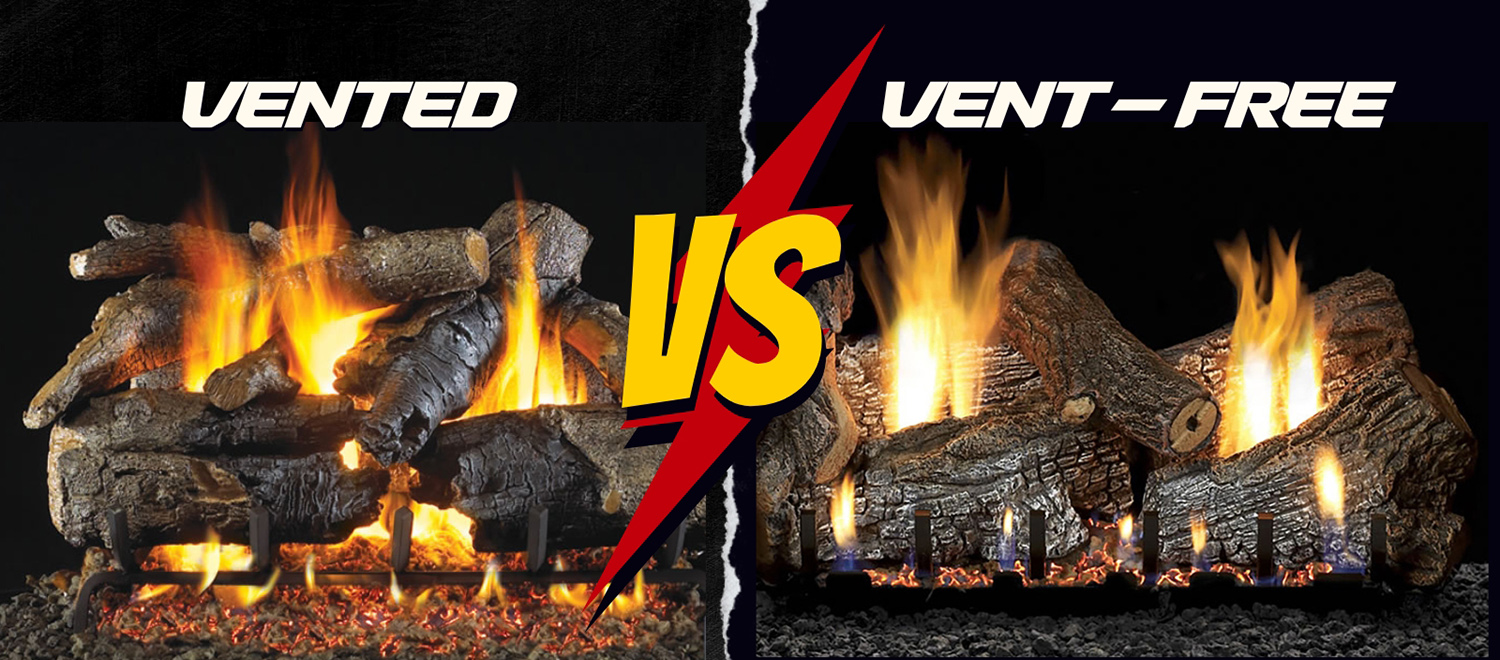
Understanding the Difference Between Vented and Vent-Free Gas Logs
If you’re considering adding gas logs to your existing fireplace, you’ve probably come across two main types: vent-free (also known as ventless) and vented gas logs. While both serve the purpose of creating a cozy, inviting atmosphere in your home, they have key differences in terms of operation, efficiency, and aesthetics. In this article, we’ll break down the differences to help you choose the best option for your needs.
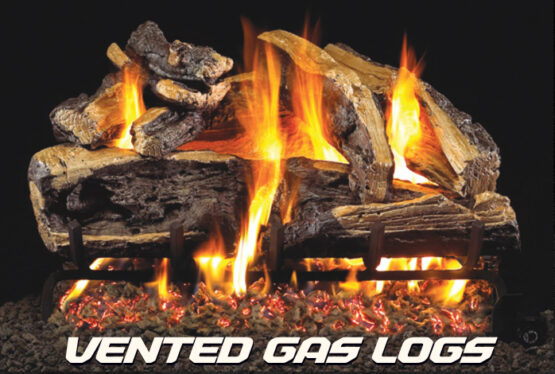
Vented Gas Logs
How They Work:
Vented gas logs are designed to mimic the look and feel of a traditional wood-burning fire without the hassle or smell. They require a wood-burning fireplace with an open damper to operate, allowing combustion gases to escape safely outside. Vented gas logs will give you the most realistic look when it comes to a gas fireplace. You’ll enjoy a large, vibrant flame that beautifully wraps around the logs, creating a realistic and natural fire experience. While they give you the most realistic look, they are the least efficient gas fireplace and they provide minimal heat because most of the heat goes up the chimney. See more of the pros & cons of vented gas logs below.
Pros:
- Aesthetic Appeal: Vented gas logs produce a more realistic flame pattern, with taller, more natural-looking flames. This makes them ideal for homeowners who prioritize the appearance of their fireplace over heat and efficiency.
- Versatile Design: There are many different log configurations to choose from and you can actually place the logs where you think they look best. Glass, rock and other more modern options are available.
- Safe for Long-Term Use: Since they require a vent, combustion gases, including carbon monoxide, are directed outside your home, reducing any risk of buildup.
- Limited Need for Service: Vented gas logs don’t require much maintenance because their burners are pretty simple to operate and not much can go wrong with them. Unlike ventless gas logs, which require more frequent cleaning to prevent clogging and to maintain safe indoor air quality. Occasional cleaning of the carbon build up on the logs and inspection of gas fittings may be needed, but the burner & logs themselves are generally maintenance-free.
Cons:
- Less Efficient for Heating: Because nearly all of the heat escapes through the chimney, vented gas logs are primarily for ambiance rather than heat efficiency.
- Requires a Chimney or Flue: Homes without an existing chimney will need to install one or opt for a different type of system, adding to the cost. Your chimney must also be in perfect shape, making sure it vents correctly without any issues so all of the fumes escape to the outside.
- Costs more to Operate: Vented gas logs use on average 90k BTU’s per hour which is roughly 3x more gas than vent-free. If you plan to operate a vented gas log fireplace regularly you will see a significat rise in your gas bill.
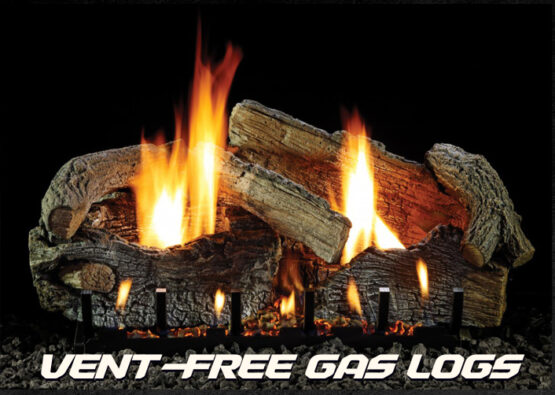
Vent-free (Ventless) Gas Logs
How They Work:
Vent-free gas logs are designed to burn gas extremely efficiently, producing very little combustion byproducts. Because of this, they don’t require an open chimney or vent, which means you can keep your damper closed and the heat will stay inside your home instead of being vented up the chimney. The combustion process is highly efficient, generating heat while minimizing the amount of gas consumed.
Vent Free burners end up producing minimal byproducts like water vapor and carbon dioxide (CO2), both of which can be safely dispersed into a room in the small amount these burners produce. Each vent-free burner is also set up with safety features like an oxygen depletion sensor which tests the oxygen levels in the room and will shut the burner off if it gets below a certain level.
Vent-free gas logs are known for their high heat output. Since they do not lose heat through a venting system, they can effectively warm a room more efficiently than vented gas logs. Vent-free gas logs offer a practical and effective supplemental heating solution that combines efficiency with the cozy ambiance of a traditional fireplace, making them a popular choice for many homeowners.
Pros:
- High Efficiency for Heating: Since no heat is lost through a vent or chimney, ventless gas logs are 99% efficient and can effectively heat a room. This makes them a great choice for supplemental heating.
- Costs less to Operate: Vent-free gas logs use only a third of the gas required by vented gas logs, operating at 24,000 BTU’s on low and 36,000 BTU’s on high. Because of this efficient fuel usage and the ability to keep the heat they produce, you’re unlikely to see a noticeable increase in your gas bill.
- Versatile: When installed in a wood-burning fireplace, vent-free gas logs offer flexibility in how you manage the heat. With the damper completely closed, all the heat stays in the room, maximizing warmth. If you prefer some ventilation, you can open the damper partially or fully, allowing heat to escape through the chimney. This setup lets you choose whether to keep all, some, or none of the heat indoors.
- Great option for Damaged Chimneys: If your chimney doesn’t draft properly or requires a costly new liner due to cracks, vent-free gas logs can be a economical alternative. By installing vent-free logs, you can avoid the expense of a new liner and still enjoy safe operation. You will still have the flexibility to either vent them through the chimney or close the damper to retain more heat in your space.
- No Venting Required: As the name suggests, vent-free logs do not require a chimney or flue for installation, allowing for greater flexibility in placement. This makes them ideal for homes without existing fireplaces or in rooms where venting would be impractical.
- Environmentally Friendly: Because of their clean-burning design, they produce fewer emissions than vented gas logs, making them more eco-friendly.
- Emergency Heat Source: Since gas logs don’t rely on electricity, vent-free gas logs will keep running even during a power outage, providing an efficient backup heating option when you need it most.
Cons:
- Less Realistic Flame: The flame patterns of ventless gas logs tend to be smaller and less natural compared to vented logs, though newer models have made significant improvements in this area.
- Odor: Some users notice an odor when vent-free is in use. This smell is generally a byproduct of the way vent-free fireplaces operate. The odor can sometimes come from contaminates that are in the room. In homes where air contains certain contaminants, like if you recently painted, have strong smelling candles burning or air fresheners, these particles can be drawn into the burner and put off an unpleasant smell. This odor can be removed by simply not burning candles and removing air fresheners. For many people, the smell of vent-free is subtle and not bothersome, but sensitive users may notice it more. If the smell is particularly strong, that could indicate an issue, like incorrect installation or something affecting the air quality in the room, so it’s always wise to consult a professional if there are any concerns.
- Requires More Routine Maintenance: Vent-free gas logs require more maintenance than vented gas logs. Since they use room air for combustion, the oxygen depletion sensor can become clogged over time and will eventually need cleaning to ensure proper operation. It’s recommended to have vent-free gas logs serviced every 2–3 years.
Which Is Right for You?
Choosing between ventless and vented gas logs depends on your specific needs and preferences. If you’re looking for ambiance and a more realistic flame without a focus on heating, vented gas logs are an excellent choice. On the other hand, if you want an effective supplemental heating solution that’s efficient and cost-effective, ventless gas logs may be the better option.
At Specialty Gas House, we offer both vented and ventless gas log systems and if you live in Columbus, Ohio we can help you determine the best fit for your home. If you’re looking to enhance the aesthetics of your fireplace and live in Columbus, Ohio, we’re here to provide expert advice and installation services.
For more information on gas logs and our other products, feel free to visit our showroom. Our team will be happy to answer any questions you have and guide you through the selection process in our showroom.
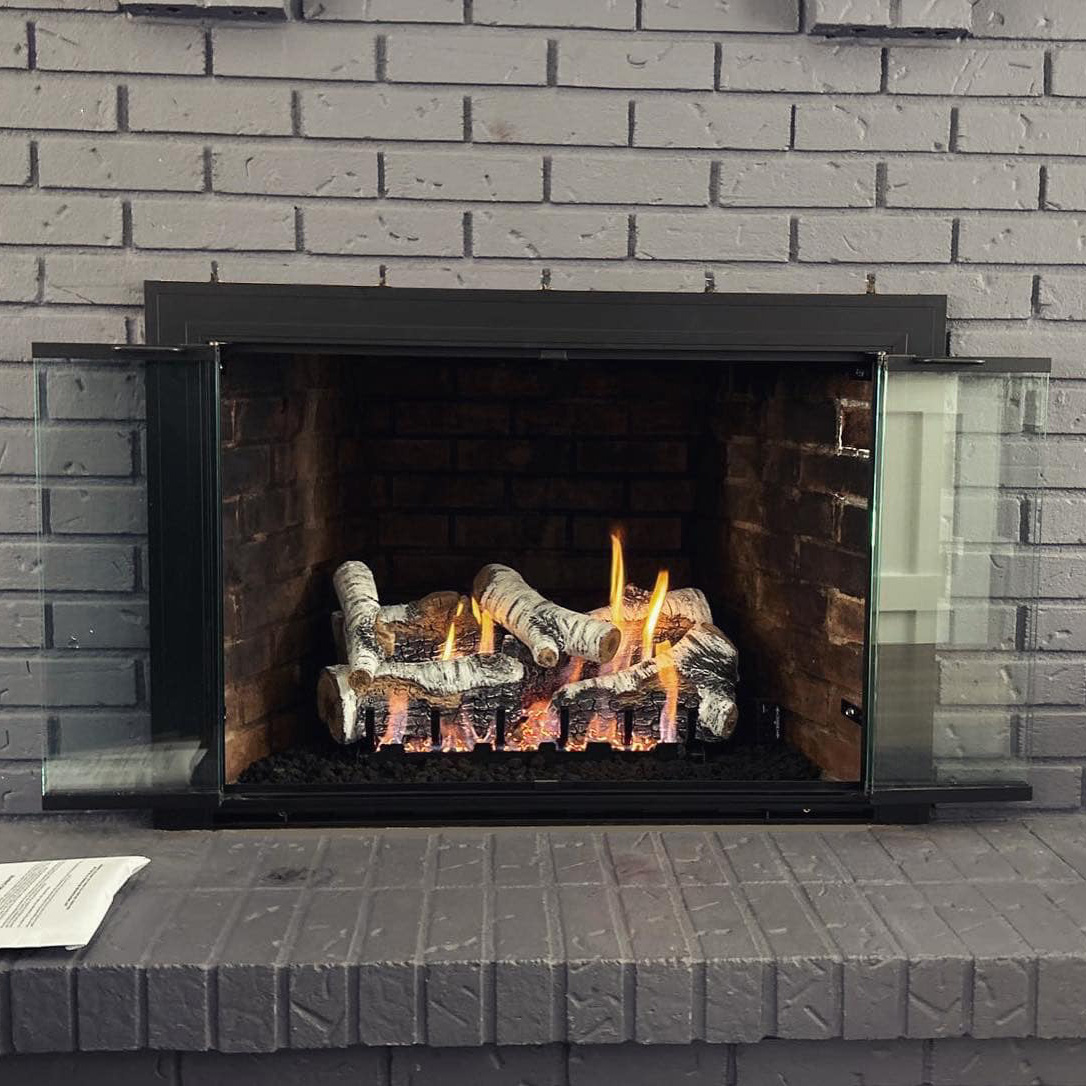
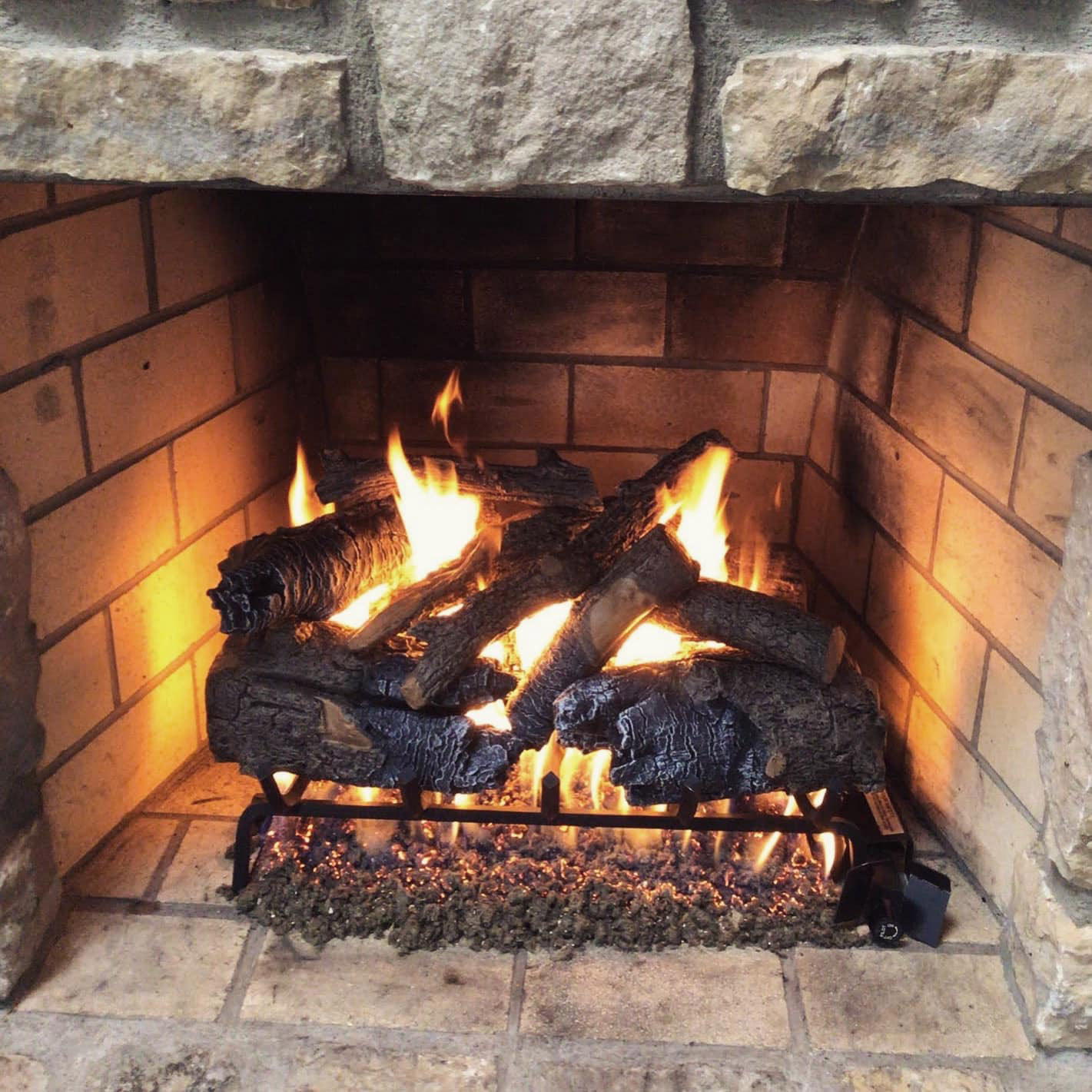
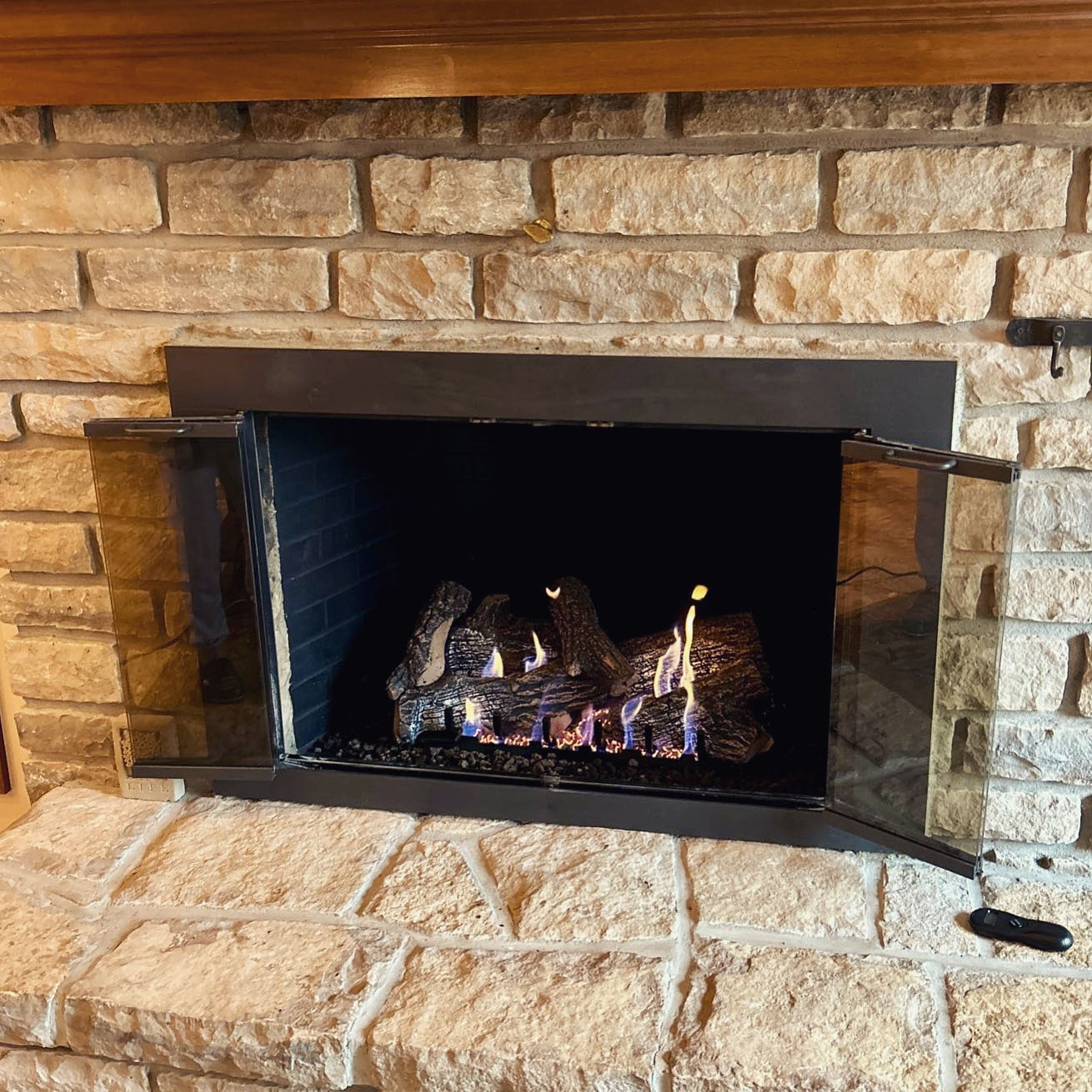
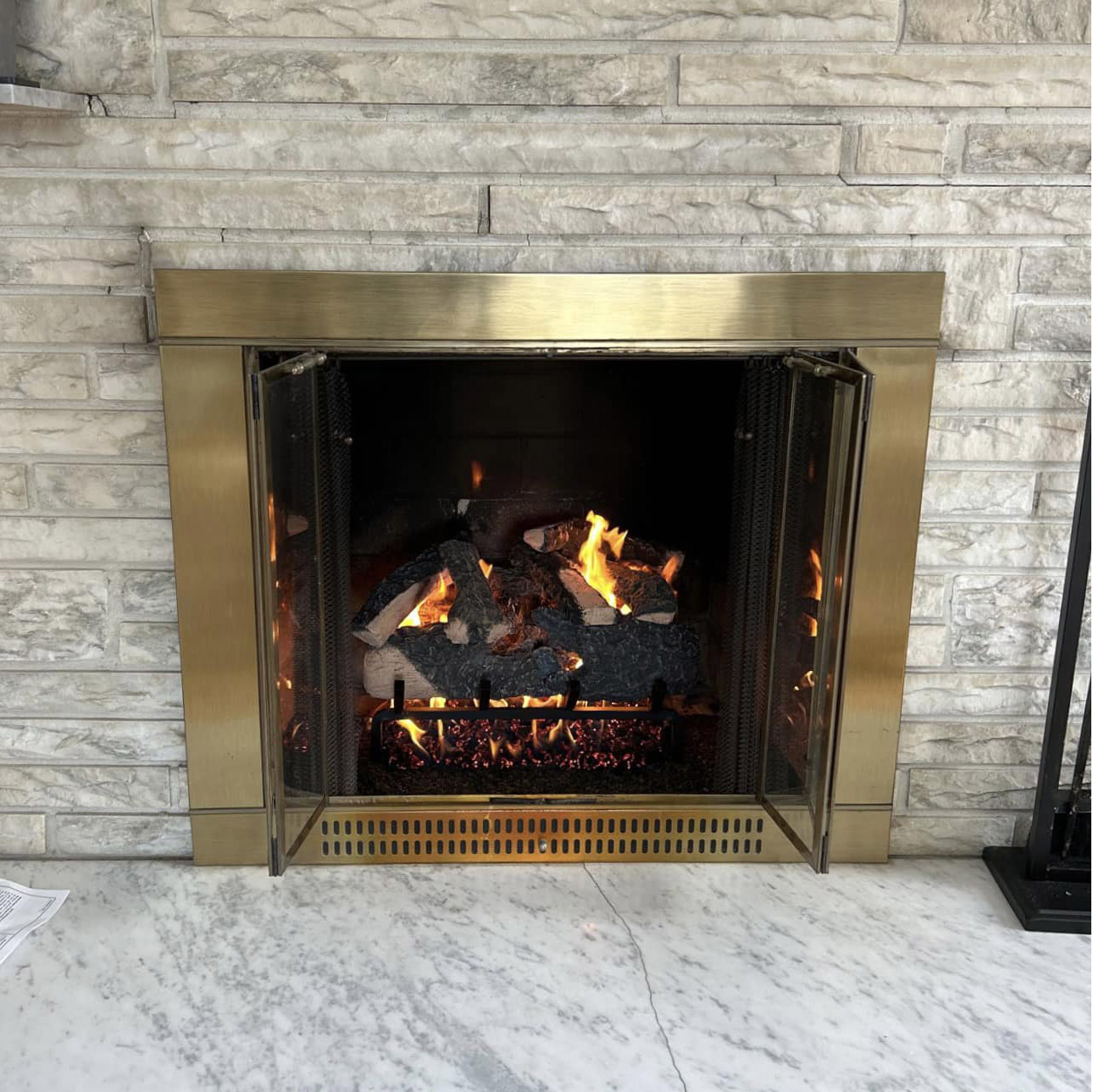
Interested in upgrading your fireplace?
To start the process, please use the measurement sheet below and bring us your measurements with a picture of your fireplace to our showroom in Columbus, Ohio so we can assist in helping you pick out the best gas log for your home.
If you would rather start by emailing us your measurements and pictures, and would like a free quote, email us at tony@specialtygashouse.com.
We do not ship gas logs and can only assist you if you live near Columbus, Ohio.

Write a Comment